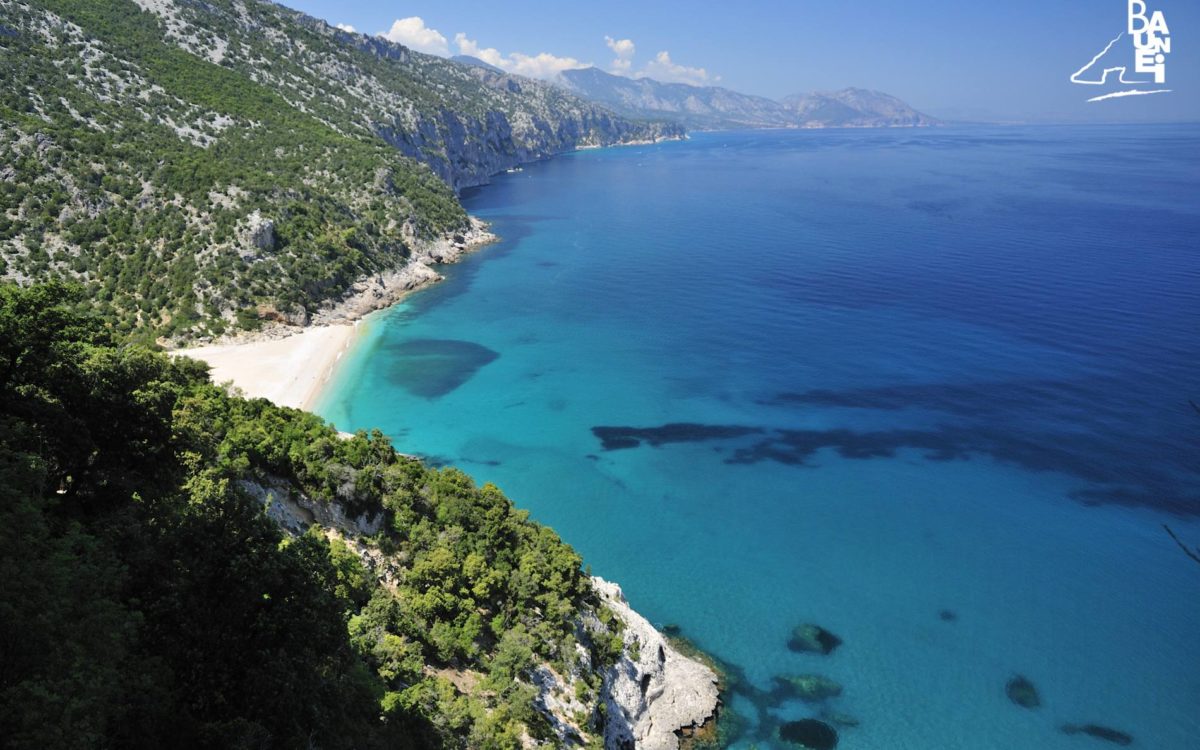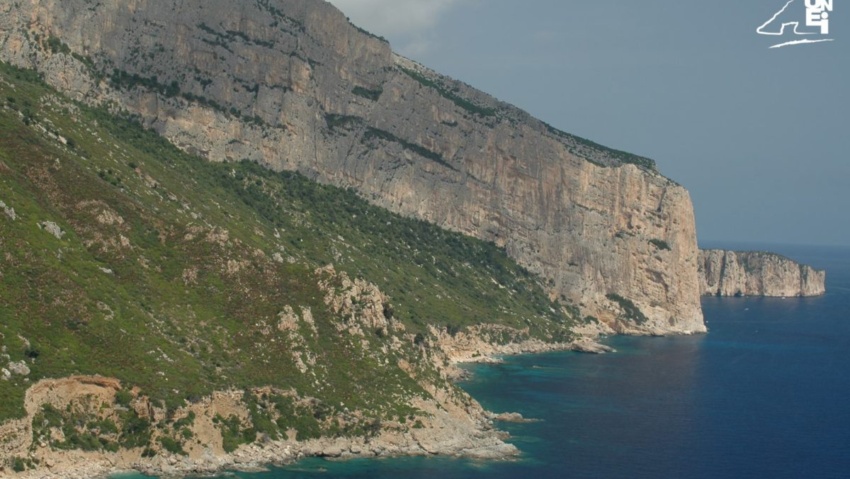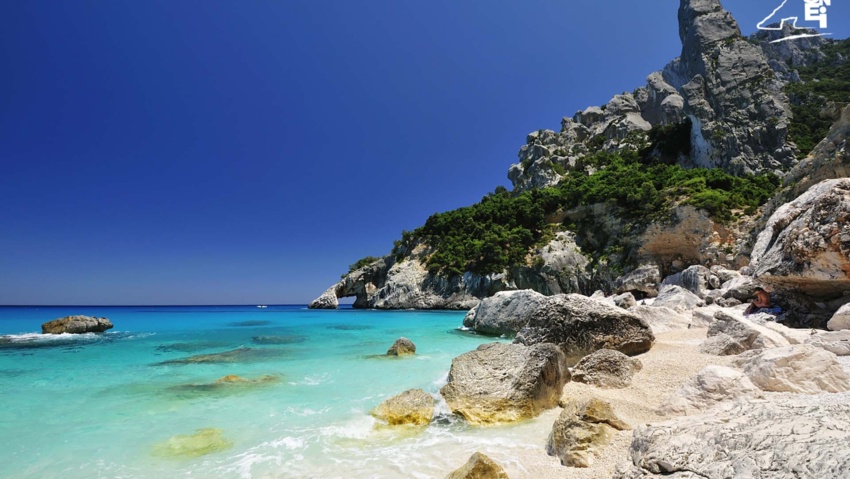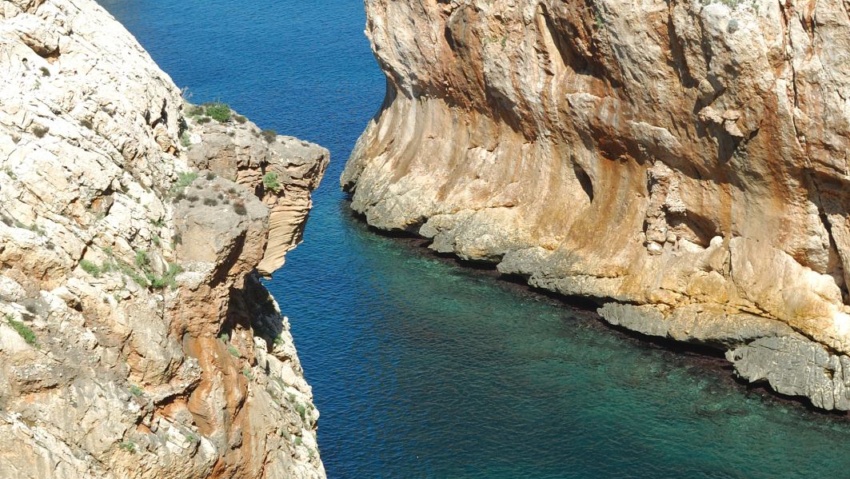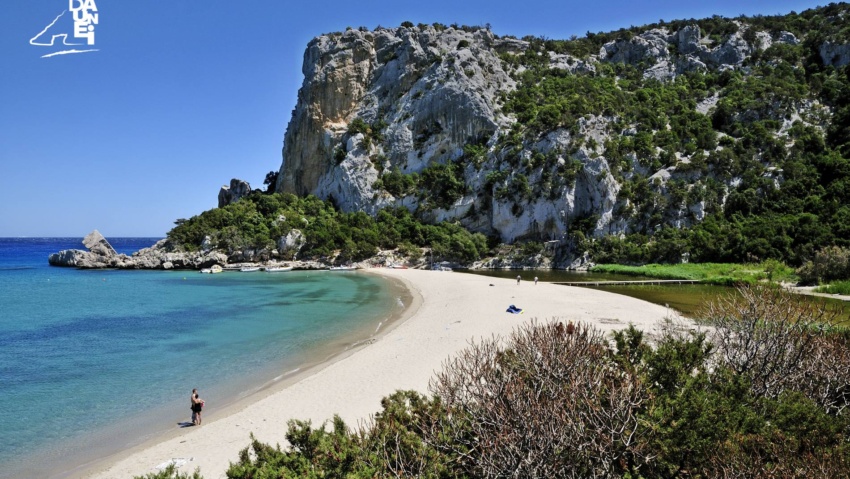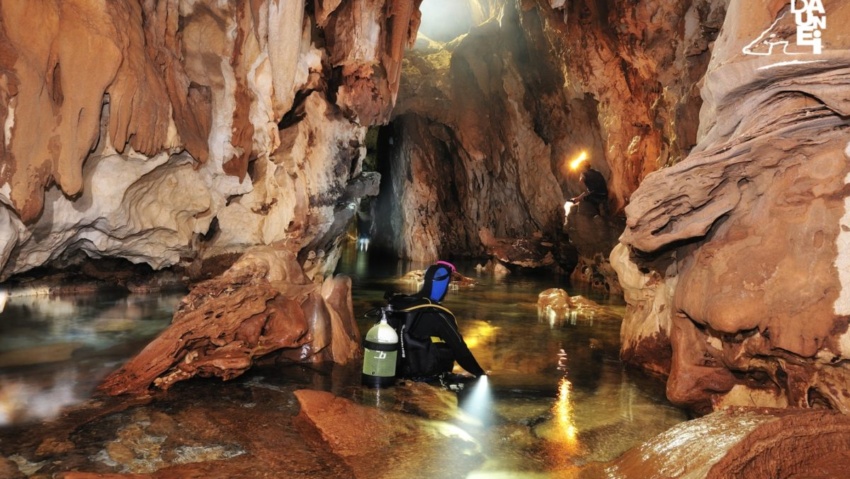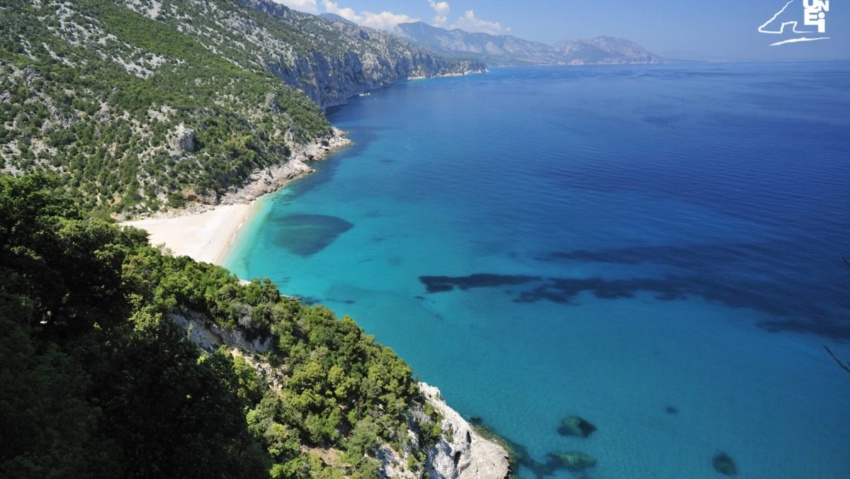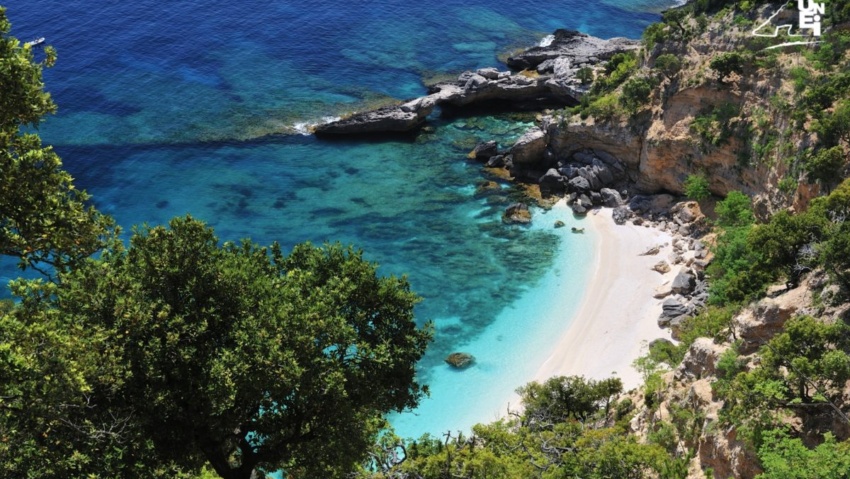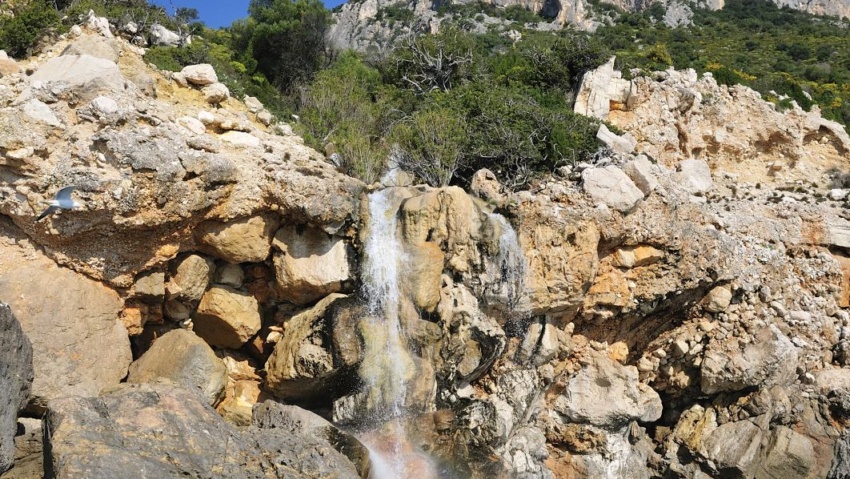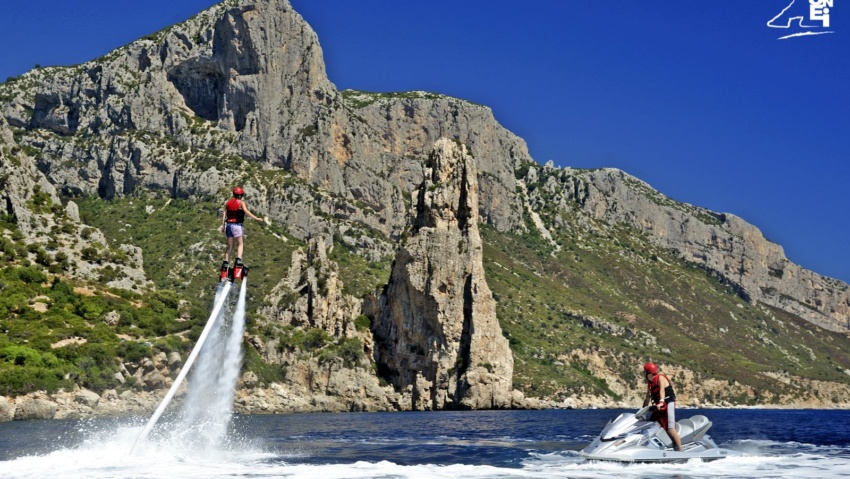Cala Sisine
Cala Sisine is, without doubt, along with the more famous Cala Luna, one of the most interesting beaches on the coast of Baunei, both due to its size (it is more than 100 metres deep and 500 metres in length), making it by far the most spacious beach on the coast, and its particular hydrogeological history, given that it appears the beach did not exist until the mid-nineteenth century. Set between the rocky promontory of “Punta Plummare” (415 metres high) and the coast of “Dolài”, the beach is the result of the accumulation of rocky debris at the mouth of the “Codula Sisine” stream. Every year during the winter rains, the stream swells significantly, dragging everything in its path downstream along its route from the Golgo plateau to the sea. The certainty that the current beach is the result of extraordinary flooding after 1850 is due to the fact that the maps of the “La Marmora – De Candia Cadastre”, dated 1849 and kept in the State Archives in Cagliari, reveal that at that time Cala Sisine appeared as a cove that penetrated the coastline for hundreds of metres: a true natural harbour. Over the following decades, floods, similar to the one in November 2008 that created Mudaloru beach, progressively moved the coast line forward until it joined the two promontories of Plummare and Dolài. An interesting reproduction of the nineteenth-century map, which clearly shows the profile of the now buried Sisine cove, can be seen in the hall of the Baunei “Documentation Centre” dedicated to the “La Marmora – De Candia Cadastre”.
Between the nineteenth and twentieth centuries, the Sisine inland was also the scene of constructions by the coalmen, who built a pantry like the one in Birìala a short distance from the beach from which coal was loaded onto ships. In 1977, the “Su Coile” tavern was built on the ruins of the pantry, mimicking the architectural structure of traditional Baunesis fold huts. During those years, a campsite was built in the woods near the beach, although it was literally blown away by floods in the nineties. Cala Sisine is also accessible by land starting from the Golgo plateau, along the dirt road that branches off to the right 200 metres before the church of St. Peter. From this point onwards, the road flanks the “Codula” for long stretches until it reached the “Planu ‘e Murta” (“the myrtle plateau”) clearing-car park, where there is a path that takes about half an hour (just over a kilometre’s walk) to get to the beach.
How to reach Cala Sisine
Cala Sisine can also be reached by land from the Golgo plateau, following the dirt road that branches off on the right 200 meters before the Church of San Pietro. From this point on begins the about 13 km long road that runs along the “Codula” for long stretches until the parking space of “Planu ‘e Murta” (“the myrtle plateau”), where a path begins which in about half an hour (little more than one km walk) leads to the beach. The “Planu ‘e Murta” parking space can be reached only by off-road vehicles or “4×4”, if you have a common car, you must park in the parking area located in the locality “Ololbissi”,from there you’ll walk for about 8 km to reach the beach.
